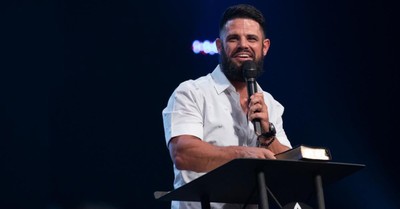
(RNS) — This month marks three years since the world crashed in on me.
Not the whole world. But the cornerstone of my world that is the church.
Many of us felt the temblors in 2016 as we watched many in our evangelical world excuse and even embrace an abusive man as president in the name of political power. In hindsight, I see now that acceptance of abuse had been going on for a long time in the contemporary church, which may be why so many couldn’t understand why tolerance of this abuser was such a big deal to some of us.
But 2016 opened my eyes, as it did for others. As I started to see, I started to listen.
In April of 2017, I posted a question to abuse survivors on my Facebook wall. The responses created such an unexpected avalanche that it turned into an article at Christianity Today titled “Ten Things Sexual Assault Victims Want You to Know.” A few months later, following the revelation of longtime, widespread abuses by Hollywood mogul Harvey Weinstein, the #MeToo movement took off, soon followed by its sister hashtag, #ChurchToo.
In January of 2018 I sat in my hotel room watching the video of abuse survivor Rachael Denhollander’s powerful testimony at the sentencing of her abuser, Larry Nassar, the former USA Gymnastics national team doctor. Then, in May of 2018, in another hotel room, while attending a conference — ironically, on the subject of women and the church — I awakened early in the morning to new details about yet another case of abuse cover-up that was unfolding.
Angry and afraid, I set out that morning to a meeting and the conference. But I didn’t make either one. Instead, I stepped into a crosswalk where, until just before it hit me, I didn’t see a bus coming.
I still can’t unsee what I saw in that moment.
Nor can I unsee so much more that I’ve come to see since then.
I believe now that I needed to go through the accident in order to understand what happens to victims of abuse and how trauma works. I thought I had understood, but I did not.
The conference I missed went on as scheduled. One of the women attending — Kerry Hasenbalg, a stranger to me — was so moved by the details of my accident that she awoke in the middle of the night in her hotel room and was prompted by the Holy Spirit to search the Bible for what it says about each of the bones that had been broken.
My new friend’s anagogical reading of the Scriptures in those early hours, which she later shared with me, follows a tradition commonly used by medieval Bible commentators, including St. Augustine. The 20th century writer Flannery O’Connor describes this approach as “a way of reading nature,” an ability “to see different levels of reality in one image or one situation” that can allow us to see and participate in the work God is doing around us.
The Scriptures tell us that life is in the blood, and blood is encased in the bones. When many core bones are broken, as mine were, life is hindered from flowing properly through the body. A broken pelvis symbolizes the broken gateway for fruitfulness. The shoulder is associated in the Bible with power, and Ezekiel prophesied against Egypt for oppressing the Lord’s people by tearing open their shoulders and wrenching their backs.
The ribs are the container for the heart and the lungs, the breath of life and the heart of God, a reminder that woman, made from the rib of Adam, needs men to be part of healing the brokenness of the church. Such brokenness can occur in many ways.
In my case, the brokenness was caused by a bus, a vehicle that moves the masses, reflecting the way women have been run over by systems and institutions. These anagogical readings pointed to how the bride of Christ needs intentional and careful healing — re-membering, re-habilitating, and re-presenting to both heaven and to earth.
For Augustine, to remember is to gather up together all that we know, experience, imagine and dream. To re-member — or re-gather — those who have been broken in or by the church is — literally and symbolically — to remember who and what the church truly is.
Before the accident, I hadn’t thought much about spiritual warfare since decades before, when I attempted to read but couldn’t get past the first five pages of Frank Peretti’s “This Present Darkness.”
These days I think about spiritual battles a lot.
I think about the mysterious stranger in the Book of Genesis who wrestled with Jacob through the night. When the stranger could not overpower Jacob, he wrenched Jacob’s hip from the socket, but then blessed him, too.
Like Jacob, I can say, “I have seen God face to face, and my life is preserved.”
Like Jacob, I am left with pain that prowls around my hip, coming and going, taking me by surprise every time, like a bus bearing down on me from out of nowhere. The pain always reminds me of the greater spiritual pain in the body — not only my body, but in the body of Christ. I think especially of the pain of those who have been abused and have yet to receive the blessing of the justice and reconciliation that heal.
Like Jacob, I don’t know if I am — or we in the church are — wrestling with man, with angels or with demons. Or all three.
But the wrestling gives me hope. As hard as it is to see the deeds of darkness come to light, there is solace in knowing that these secret sins are being revealed and that in being revealed are losing some of their power. The wrestling reveals, too, who is for the victims and who is not, who is being deceived and who is doing the deceiving.
While I was writing this essay, the pain came back.
In the midst of it, I had a dream that I was fighting with a demon who was trying to attack a beloved, vulnerable friend. The demon grew more vile and disgusting as the dream went on, transforming from shadow to spirit and, finally, to flesh and blood, when I could finally grab its carnal arm. I held it tightly to bring it down.
And in the dream, I was angry, but not afraid.
(The views expressed in this opinion piece do not necessarily reflect those of Religion News Service or Christian Headlines.)
Article originally published by Religion News Service. Used with permission.
READ THIS STORY AT RELIGIONNEWS.COM.
Photo courtesy: ©Getty/Marjan_Apostolovic
Karen Swallow Prior is Research Professor of English and Christianity and Culture at Southeastern Baptist Theological Seminary and the author of “Fierce Convictions: The Extraordinary Life of Hannah More — Poet, Reformer, Abolitionist,” among other titles, and is editor of a series of classic literature, most recently “Jane Eyre” and “Frankenstein.” She and her husband live on a 100-year-old homestead in central Virginia with sundry horses, dogs, and chickens. And lots of books.










